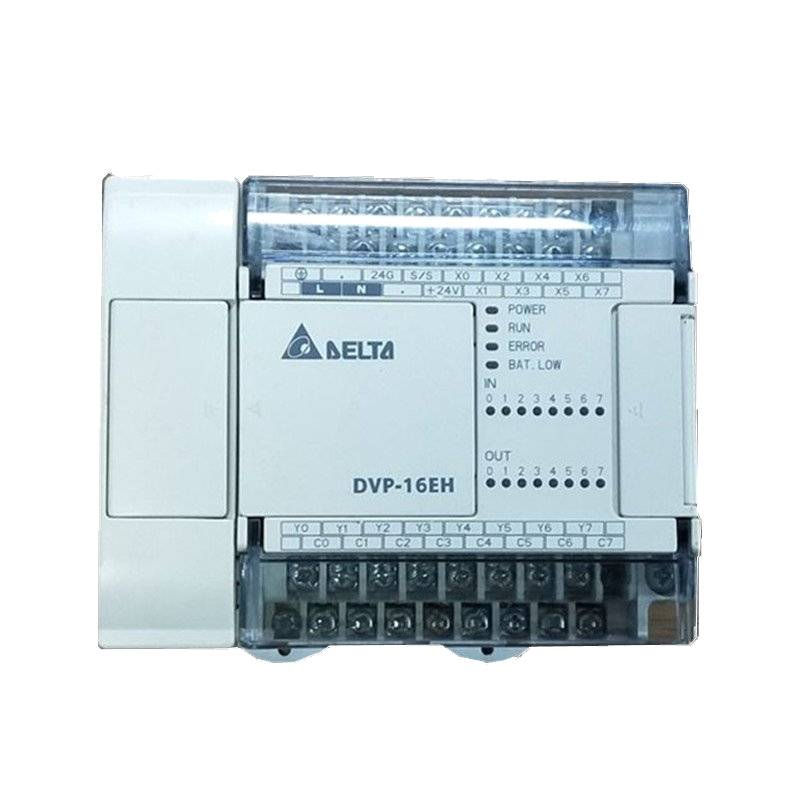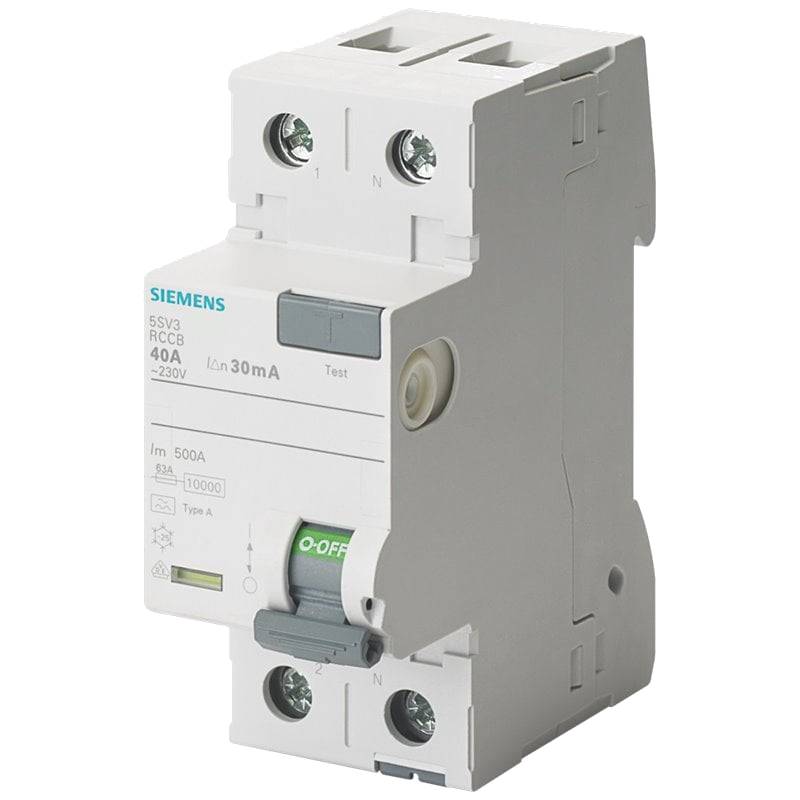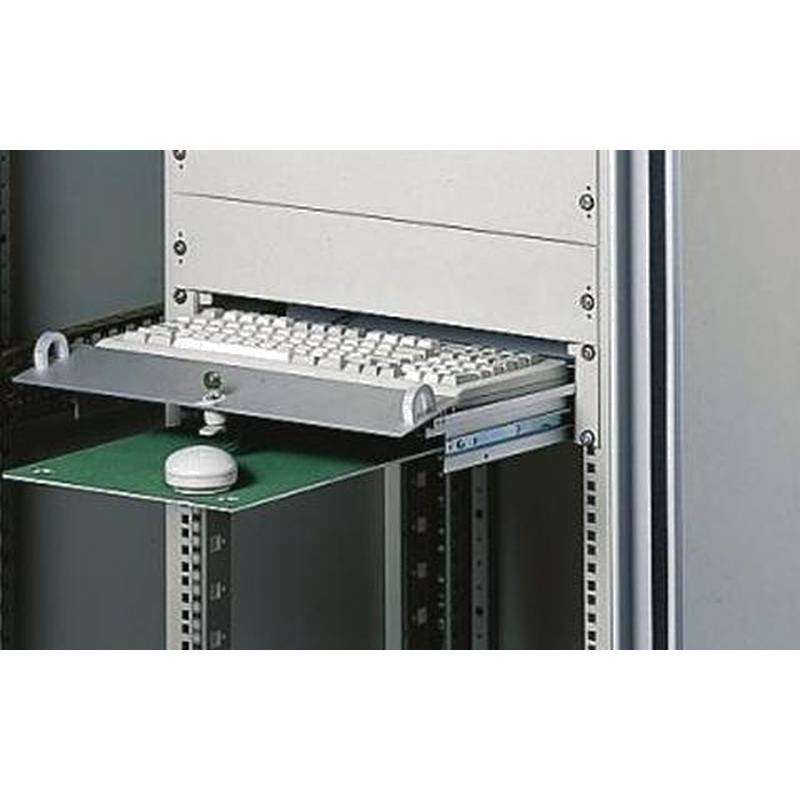
The Delta DVP16EH00T3 EH3 Series 16-point Transistor Output PLC Main Unit stands as a robust and versatile solution for a wide array of industrial automation tasks. This compact yet powerful Programmable Logic Controller (PLC) offers exceptional performance, reliability, and ease of integration, making it a preferred choice for discrete manufacturing, packaging machinery, and building automation systems. Its key advantages lie in its high-speed processing capabilities, extensive I/O capacity, and robust transistor output design, ensuring precise control and efficient operation. With 16 I/O points, it provides a solid foundation for many applications, expandable through various communication modules. The EH3 series also boasts advanced features like built-in positioning functions and comprehensive communication protocols, enabling seamless connectivity and intelligent automation.
Product Specifications
| Feature | Specification |
| :------------------- | :------------------------------------------------- |
| Model | DVP16EH00T3 |
| Series | DVP-EH3 Series |
| I/O Points | 16 (8 Digital Inputs, 8 Digital Transistor Outputs) |
| Output Type | Transistor (NPN) |
| Max. Output Current | 0.5A per point |
| Power Supply | 100-240V AC |
| Program Capacity | 16k steps |
| Data Registers | 10k words |
| High-Speed Counters | 2 points x 10kHz, 2 points x 20kHz (optional) |
| Communication Ports | RS-232, RS-485 (built-in) |
| Expansion Capability | Up to 8 modules |
| Dimensions (W x H x D)| 140mm x 90mm x 60mm |
Core Features & Market Positioning
The Delta DVP16EH00T3 distinguishes itself in the competitive PLC market through its superior processing speed and advanced transistor output capabilities. This allows for faster response times and higher precision in demanding applications, such as high-speed packaging or precise motion control. The integrated RS-232 and RS-485 communication ports offer native support for common industrial protocols, simplifying integration into existing networks and facilitating data exchange with other devices and supervisory systems. Delta's EH3 series is strategically positioned as a cost-effective yet high-performance solution, offering features typically found in more expensive controllers. Its reliability and compact form factor also make it ideal for space-constrained environments, a significant advantage in machine building and panel design. Furthermore, the inherent expandability of the EH3 series ensures that systems can grow with evolving production demands, providing long-term value and flexibility.
Key Application Scenarios
The versatility of the Delta DVP16EH00T3 makes it suitable for a broad spectrum of industrial automation needs. It excels in discrete manufacturing processes requiring precise digital control, such as assembly lines, material handling systems, and quality inspection stations. Its high-speed transistor outputs are particularly well-suited for controlling servo motors, stepper motors, and pneumatic actuators where rapid and accurate switching is paramount. In the packaging industry, it's frequently employed in labeling machines, filling equipment, and carton erectors due to its speed and reliability. Building automation systems also benefit from its robust I/O and communication capabilities, managing HVAC controls, lighting systems, and security access. The PLC's ability to handle complex logic and integrate seamlessly with human-machine interfaces (HMIs) further enhances its utility in diverse automation projects.
Practical System Integration Guidance
Integrating the Delta DVP16EH00T3 into an industrial control system involves careful planning of wiring and programming. The unit requires a stable 100-240V AC power supply, and proper grounding is essential for electrical noise immunity and safety. Digital inputs typically connect to switches, sensors, and pushbuttons, requiring appropriate voltage levels (e.g., 24V DC) and current sinking or sourcing configurations depending on the sensor type. The 8 transistor outputs can drive loads such as relays, solenoids, and indicator lamps, with a maximum current of 0.5A per point. It's crucial to ensure the load current does not exceed this limit to prevent output damage. For programming, Delta's ISPSoft software is used, supporting ladder logic, structured text, and function block diagrams. Establishing communication often involves using standard RS-232 or RS-485 cabling and configuring communication parameters within the software to match the connected devices, such as HMIs or other PLCs.
Operation and Risk Mitigation
Safe and efficient operation of the Delta DVP16EH00T3 PLC hinges on adherence to best practices and understanding potential failure modes. Always ensure that power is disconnected before making any wiring changes or performing maintenance. Overloading the transistor outputs is a common risk; verify that the current draw of connected devices does not exceed the 0.5A per point limit. Using appropriate surge protection for the power supply and input/output signals can mitigate damage from electrical transients. Fault detection and error handling are critical. The PLC's diagnostic features can indicate issues such as I/O faults or communication errors. Referencing the official Delta PLC manual is essential for interpreting specific error codes and implementing corrective actions, which may involve checking wiring, verifying sensor functionality, or troubleshooting program logic. Regular firmware updates, when available, can also enhance stability and address potential vulnerabilities.
Scalability & Long-Term Value
The Delta DVP16EH00T3 EH3 Series PLC is designed with scalability and long-term value in mind, ensuring that automation systems can adapt to future needs. Its modular design allows for the addition of various expansion modules, including communication modules (e.g., Ethernet, PROFIBUS), analog I/O modules, and specialized function modules, significantly increasing its I/O count and functional capabilities without replacing the main unit. This makes it an excellent choice for projects that are expected to grow or require integration with a wider range of equipment over time. Compatibility with Delta's broader automation ecosystem, including HMIs and servo drives, simplifies the creation of integrated solutions. Furthermore, its support for common industrial communication protocols facilitates its integration into IIoT (Industrial Internet of Things) architectures, enabling advanced data analytics, remote monitoring, and predictive maintenance, thereby maximizing its return on investment and future-proofing automation infrastructure.
Frequently Asked Questions
Q1: What are the primary advantages of using the Delta DVP16EH00T3 PLC?
This PLC offers high-speed processing for demanding tasks. Its transistor outputs provide precise and fast switching capabilities. It also features a compact design, ideal for space-constrained applications.
Its built-in RS-232 and RS-485 ports simplify communication integration. The EH3 series is known for its reliability and cost-effectiveness. It supports advanced features like positioning.
Scalability through expansion modules ensures future-proofing. Compatibility with other Delta products streamlines system design. It's a robust solution for discrete automation.
Q2: How do I connect external devices to the transistor outputs of the DVP16EH00T3?
Ensure the total current draw of connected loads does not exceed 0.5A per output. Connect your load (e.g., relay, solenoid) in series with the DC power supply and the PLC's transistor output.
Always observe correct polarity when wiring. For inductive loads, a flyback diode across the load is recommended to protect the output from voltage spikes.
Verify your load voltage and current ratings match the PLC's output specifications. Proper grounding of the system is crucial for preventing electrical noise and ensuring safe operation.
Q3: Can the Delta DVP16EH00T3 communicate with other PLCs or devices?
Yes, it features built-in RS-232 and RS-485 communication ports. These ports support various industrial communication protocols for seamless integration.
Using Delta's ISPSoft software, you can configure communication parameters. This enables data exchange with HMIs, SCADA systems, or other PLCs.
The PLC can also be expanded with communication modules for Ethernet or fieldbus networks, increasing its connectivity options further.
Q4: What is the maximum program capacity and data memory for this PLC?
The DVP16EH00T3 main unit has a program capacity of 16k steps. This allows for substantial logic and control sequences.
It also provides 10k words of data registers. This memory is used for storing variables, status bits, and operational data.
Sufficient memory ensures complex applications can be developed and executed efficiently. Extended memory options may be available via expansion.
Q5: How do I perform basic troubleshooting if the DVP16EH00T3 is not functioning correctly?
First, check the power supply and all wiring connections for proper installation and integrity. Verify that all input signals are within the specified voltage range.
Consult the PLC's diagnostic indicators and error codes. Refer to the user manual for a detailed explanation of error codes and troubleshooting steps.
If problems persist, consider resetting the PLC or re-downloading the program. If hardware failure is suspected, contact Delta support or a qualified technician.
Q6: What type of digital inputs does the DVP16EH00T3 support?
The PLC is equipped with 8 digital inputs. These inputs are compatible with standard industrial voltage levels, typically 24V DC.
Ensure your input devices (sensors, switches) provide the correct voltage and signal type. Pay attention to sinking/sourcing configurations as required by your application.
Proper wiring and grounding of the input circuits are essential for accurate signal acquisition and to prevent noise interference.
Q7: Can I expand the I/O points of the Delta DVP16EH00T3?
Yes, the DVP-EH3 series supports expansion modules. You can add up to 8 expansion modules to increase I/O capabilities.
Expansion options include digital and analog I/O modules, as well as communication modules. This allows for flexible system design and future upgrades.
Carefully select expansion modules that are compatible with the DVP16EH00T3 to ensure seamless integration and functionality.
Q8: What programming software is used for the Delta DVP16EH00T3?
The primary programming software for this PLC is Delta's ISPSoft. It provides a comprehensive environment for developing, debugging, and monitoring PLC programs.
ISPSoft supports multiple programming languages, including Ladder Diagram (LD), Structured Text (ST), and Function Block Diagram (FBD). This offers flexibility in programming approaches.
Ensure you download the latest version of ISPSoft from the official Delta website for full compatibility and access to the newest features.
Q9: What are the key applications where the transistor output is beneficial?
Transistor outputs are ideal for high-speed switching applications. They excel in controlling devices like servo motors, stepper motors, and solenoid valves.
Their fast response time is crucial for motion control and precise positioning tasks. They also offer silent operation compared to relay outputs.
The low power consumption and lack of mechanical wear make them highly reliable for frequent switching cycles in automated machinery.
Q10: What safety considerations should be observed when working with this PLC?
Always disconnect power before making or changing any electrical connections. Ensure proper grounding of the PLC and associated equipment to prevent electrical hazards.
Understand the output current limitations to avoid overloading and potential damage or fire hazards. Use appropriate safety interlocks and emergency stop circuits within the overall machine design.
Follow local electrical codes and industrial safety standards. Qualified personnel should perform installation, maintenance, and programming tasks.

























